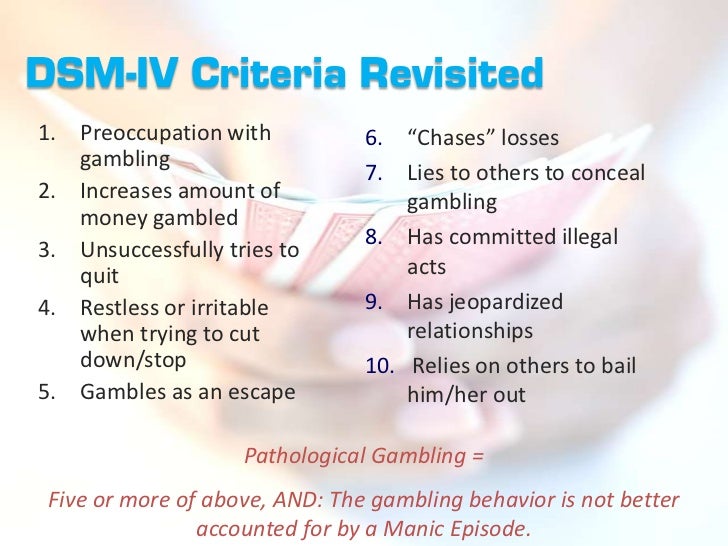Sogs Gambling
A total of 30 individuals contacted the research coordinator per phone or email after completing a self-administered online screen (South Oaks Gambling Screen, SOGS, ‘modified’ to capture behaviours over the last 12 months).28–30 Scoring of the SOGS screen was as follows: (1) 0=no problem with gambling, 1–4 some problems with gambling. South Oaks Gambling Screen (SOGS) NORC DSM Screen for Gambling Problems (NODS) GA 20 Questions Lie/Bet NODS-CLiP NODS-PERC Brief Biosocial Gambling Screen (BBGS).



Overview
The South Oaks Gambling Screen (SOGS) is a screen used to measure pathological gambling. This 16-item instrument asks questions related to many gambling behaviours. It also asks questions about how the individual feels about his or her own gambling habits. SOGS classifies individuals into one of three categories: non-problem gambler, problem gambler and probable pathological gambling. The SOGS can be used by individuals as a self-assessment tool, and mental health practitioners can also use this tool to screen their clients. A modified version of the SOGS for adolescents is also available and includes 12 items.
Key Points
Sogs Gambling
SOUTH OAKS GAMBLING SCREEN Please email, mail or fax this form to: Mental Health America of Northeast Indiana Training and Outreach Coordinator 1025 West Rudisill Boulevard Box 8 Fort Wayne, IN 46807 FAX: 260-423-3400 EMAIL: info@mhaac.com If you have questions about the program or this form, please call 260.422.6441.
It is important to remember that this tool is not a diagnoses of pathological gambling, however, studies have shown the SOGS to be a reliable and valid measure of gambling problems. The items relate to the clinical symptoms of gambling problem as presented by the DSM. Some authors have raised concerns with some of the questions asked in the SOGS. Specifically, questions regarding the amount of debt that a gambler accumulates and questions about having a line of credit are considered poor, as they do not directly measure gambling problems.
References
Stinchfield, R. (2002). Reliability, validity, and classification accuracy of the South Oaks Gambling Screen (SOGS). Addictive Behaviors, 27(1), 1-19.
Orford, J., Sproston, K., & Erens, B. (2003). SOGS and DSM-IV in the British Gambling Prevalence Survey: Reliability and factor structure. International Gambling Studies, 3(1), 53-65.
Dogs Gambling Painting Meaning
Young, M., & Stevens, M. (2008). SOGS and CGPI: Parallel comparison on a diverse population. Journal of Gambling Studies, 24(3), 337-356.